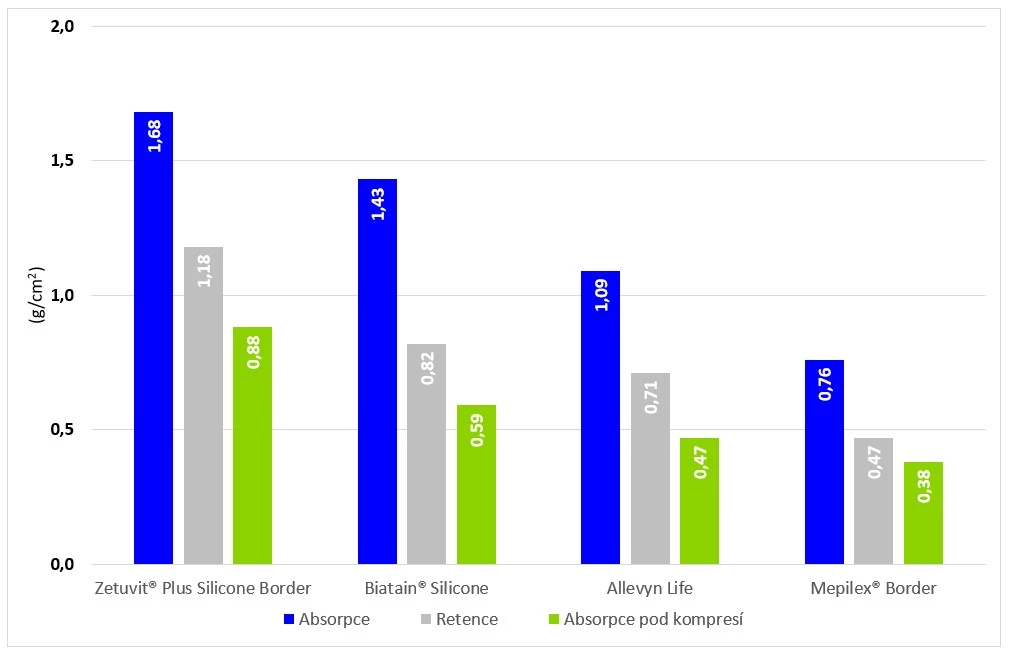Innovation in Wound Healing: Zetuvit Plus Silicone Border for Optimal Wound Exudate Management
Excessive wound exudate can lead to delayed healing, skin damage around the wound, or leakage under the chosen dressing. Zetuvit Plus Silicone Border dressing with high absorbent and retention capacity offers confidence in treating both chronic and acute wounds and high comfort for the patient.
COMMERCIAL INFORMATION
The Importance of Exudate in Wound Healing
Exudate plays an important role in the wound healing process.1 However, insufficient or excessive amounts, inappropriate composition, or action in the wrong place can slow down wound healing.2 Selecting the appropriate dressing is critical for exudate management.1
A recent study conducted on patients with wounds with mild to moderate exudate showed that nearly two-thirds of them used an inappropriate type of dressing in terms of exudate management.3
Choosing the Right Dressing for Wounds with Increased Exudation
Excessive wound exudate can not only slow healing but also lead to maceration or erosion of the skin around the wound. It can cause pain to the patient and considerable discomfort if the exudate leaks through the dressing, especially if accompanied by odor.
In 2019, the World Union of Wound Healing Societies (WUWHS) issued a consensus document on the effective assessment and management of wound exudate.1 This consensus recommends using the Falanga score to assess the degree of exudate (see table).4 It further states that the dressing should prevent exudate leakage and contact with the surrounding skin, thereby promoting optimal healing.1
Table: Falanga Score for Assessing Exudate Levels
|
Exudate Level |
Exudate Control |
Amount of Exudate |
Dressing Requirements |
|
1 |
complete |
small/minimal |
no absorbent dressing needed; dressing can remain on wound up to 7 days |
|
2 |
partial |
moderate |
dressing change needed every 2–3 days |
|
3 |
none |
very high |
absorbent dressing with a need for daily changes |
New Zetuvit Plus Silicone Border
Zetuvit Plus Silicone Border is a hydro-polymer dressing with a superabsorbent polymer (SAP) and a silicone layer, suitable for wounds with exudation levels 2 and 3 according to the Falanga score.4 It offers very high absorbent and retention capacity5 while maintaining an optimal microclimate.6 Zetuvit Plus Silicone Border effectively absorbs and retains excess exudate and high amounts of proteases (MMPs) found in non-healing wound exudate.7 This, together with the silicone layer8, protects the surrounding skin and reduces the need for frequent dressing changes. The transparent edge of the dressing allows the surrounding skin to remain visible. The application is straightforward and intuitive and can be done aseptically using protective gloves.9 The silicone contact layer ensures an almost painless dressing change.8 The dressing adapts to body contours and protects against mechanical impacts.10 Its outer layer is breathable and waterproof, further enhancing patient comfort.5, 8
The conducted analysis showed that the absorption and retention of Zetuvit Plus Silicone Border is better in treating wounds with moderate to high exudation than similar dressings with a silicone contact layer (silicone foams with SAP), even under compression (see figure).5
Fig.: Comparison of 4 silicone layer dressings designed for treating wounds with moderate to high exudation in terms of retention and absorption of exudate
Conclusion
The properties of Zetuvit Plus Silicone Border simplify dressing selection for wounds with moderate to high exudation. This dressing also addresses unexpected increases in wound exudate. It assists in exudate management and prevents the unpleasant impacts of leakage. It also enhances patient comfort and sense of security.
Zetuvit Plus Silicone Border is fully covered and can be prescribed to patients without additional charges. More information on how this innovative dressing works can be found in the following video: https://youtu.be/VBKhpryAtH4?si=WQd7YsVoanx1Du1q
(zza)
Sources:
1. Schultz G., Tariq G., Harding K. et al. WUWHS Consensus Document – Wound Exudate, effective assessment and management. WUWHS, 2019 Feb 1. Available at: https://woundsinternational.com/world-union-resources/wuwhs-consensus-document-wound-exudate-effective-assessment-and-management
2. Moore Z., Strapp H. Managing the problem of excess exudate. Br J Nurs 2015; 24 (15): S12, S14−S17, doi: 10.12968/bjon.2015.24.Sup15.S12.
3. Stephen-Haynes J., Callaghan R., Rippon M. G., Simm S. A retrospective audit of the treatment of wounds with moderate to high exudate levels. Wounds UK 2018; 14 (5): 2−11. Available at: www.linkforwoundhealing.info/-/media/linkhub/pdf-content/publication/2018_jacky-s-n_retrospective_treatment_wounds_moderate_high_exuding_en.pdf
4. Falanga V. Classifications for wound bed preparation and stimulation of chronic wounds. Wound Repair Regen 2000; 8 (5): 347−352.
5. Data on file: 27. Z+SilBorder_benchmark.
6. Data on file: Dressing Heat and Water Vapor Report 20.07.2018.
7. Davies L. O., Carney J., Purcell L. E. et al. Microbial sequestration and proteinase modulation properties of silicone-coated superabsorbent dressings perfectus paper 2017. Poster presented at Wounds UK, Harrogate.
8. Data on file: 27. Z+SilBorder_ Add_Feat_adhesiveness assessment.
9. Data on file: Usability Test with n=30 2018.
10. Data on file: 27. Z+SilBorder_Thickness.
Did you like this article? Would you like to comment on it? Write to us. We are interested in your opinion. We will not publish it, but we will gladly answer you.


